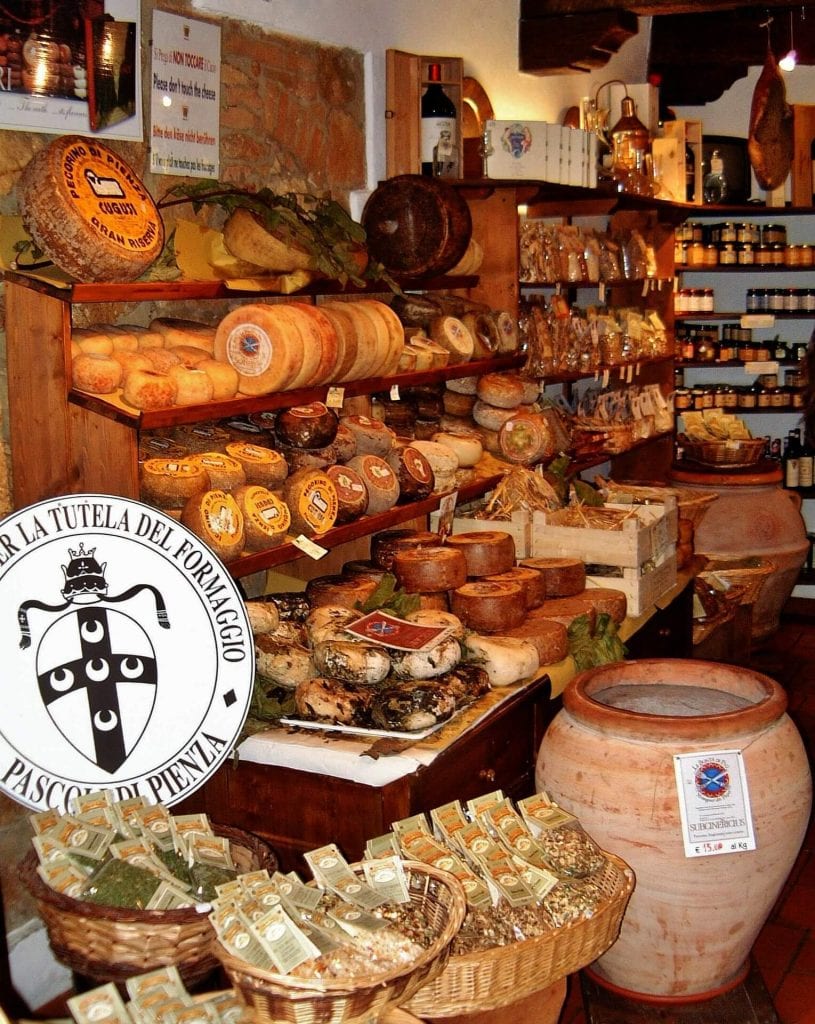Pienza – the touchstone of Renaissance urbanism
Pienza is a town in the province of Siena, Tuscany, in the historical region of Val d’Orcia. Situated between the towns of Montepulciano and Montalcino, it is considered the “touchstone of Renaissance urbanism“.

In 1996, UNESCO declared the town a World Heritage Site, and in 2004 the entire valley, the Val d’Orcia, was included on the list of UNESCO’s World Cultural Landscapes.
Before the village was renamed to Pienza its name was Corsignano. It is first mentioned in documents from the 9th century.
In 1405 Aeneas Silvius Piccolomini was born in Corsignano, a Renaissance humanist born into an exiled Sienese family, who later became Pope Pius II. Once he became Pope, Piccolomini had the entire village rebuilt as an ideal Renaissance town and renamed it after himself to Pienza which mean “city of Pius“.
Intended as a retreat from Rome, it represents the first application of humanist urban planning concepts, creating an impetus for planning that was adopted in other Italian towns and cities and eventually spread to other European centers.
Palazzo Piccolomini
The trapezoidal piazza is defined by four buildings. The principal residence, Palazzo Piccolomini, is on the west side. Noteworthy is the internal court of the palazzo. The back of the palace, to the south, is defined by a loggia on all three floors that overlook an enclosed Italian Renaissance garden and views into the distant landscape of the Val d’Orcia and Pope Pius’s beloved Mount Amiata beyond.
The Duomo
The Duomo (Cathedral), which dominates the center of the piazza, has a facade that is one of the earliest designed in the Renaissance manner. Though the tripartite division is conventional, the use of pilasters and of columns, standing on high dados and linked by arches, was novel for the time.
Palazzo Vescovile
Pius encouraged cardinals to build palazzi to complete the city. Palazzo Vescovile, on the third side of the piazza, was built to house the bishops who would travel to Pienza to attend the pope. Its construction was financed by Cardinal Rodrigo Borgia (the future Pope Alexander VI but, at the time, Vatican Vice-Chancellor). It may represent a remodeling of the old town hall of Corsignano.
It is now home to the Diocesan Museum, and the Museo della Cattedrale. The collection includes local textile work as well as religious artifacts. Paintings include a 12th-century painted crucifix from the Abbey of San Pietro in Vollore, 14th century works by Pietro Lorenzetti (Madonna with Child) and Bartolo di Fredi (Madonna della Misericordia).
Palazzo Comunale
Across from the church is the town hall, or Palazzo Comunale. When Corsigniano was given the status of an official city, a Palazzo was required that would be in keeping with the “city’s” new urban position, though it was certainly more for show than anything else. It has a three-arched loggia on the ground floor facing the Cathedral and above it is the council chamber. It also has a brick bell tower that is shorter than its counterpart at the cathedral, to symbolize the superior power of the church.
The set-back addition to the tower dates from 1599. It is likely that Bernardo Rossellino designed the Palazzo Comunale to be a free standing civic mediator between the religious space before the cathedral and secular market square to its rear.
The travertine well in the Piazza carries the Piccolomini family crest, and was widely copied in Tuscany during the following century. The well-head resembles a fluted, shallow Etruscan Bowl. The flanking Corinthian support a classical entablature columns whose decorations are clearly based upon actual source materials.

Pienza Pecorino Cheese
The pecorino cheese of Pienza is one of the best in Italy.
The cheese has ancient origins and has probably been produced in the zone since man first settled here.
One on the recommended shops where you can find amazing pecorino cheese and related products is “La Taverna del Pecorino di Pienza“.
Sometimes known as ‘Pecorino della Val d’Orcia‘ or ‘Cacio di Pienza‘ it is produced between October and July and seasoned for up to 2 months to give it its distinctive flavour.
